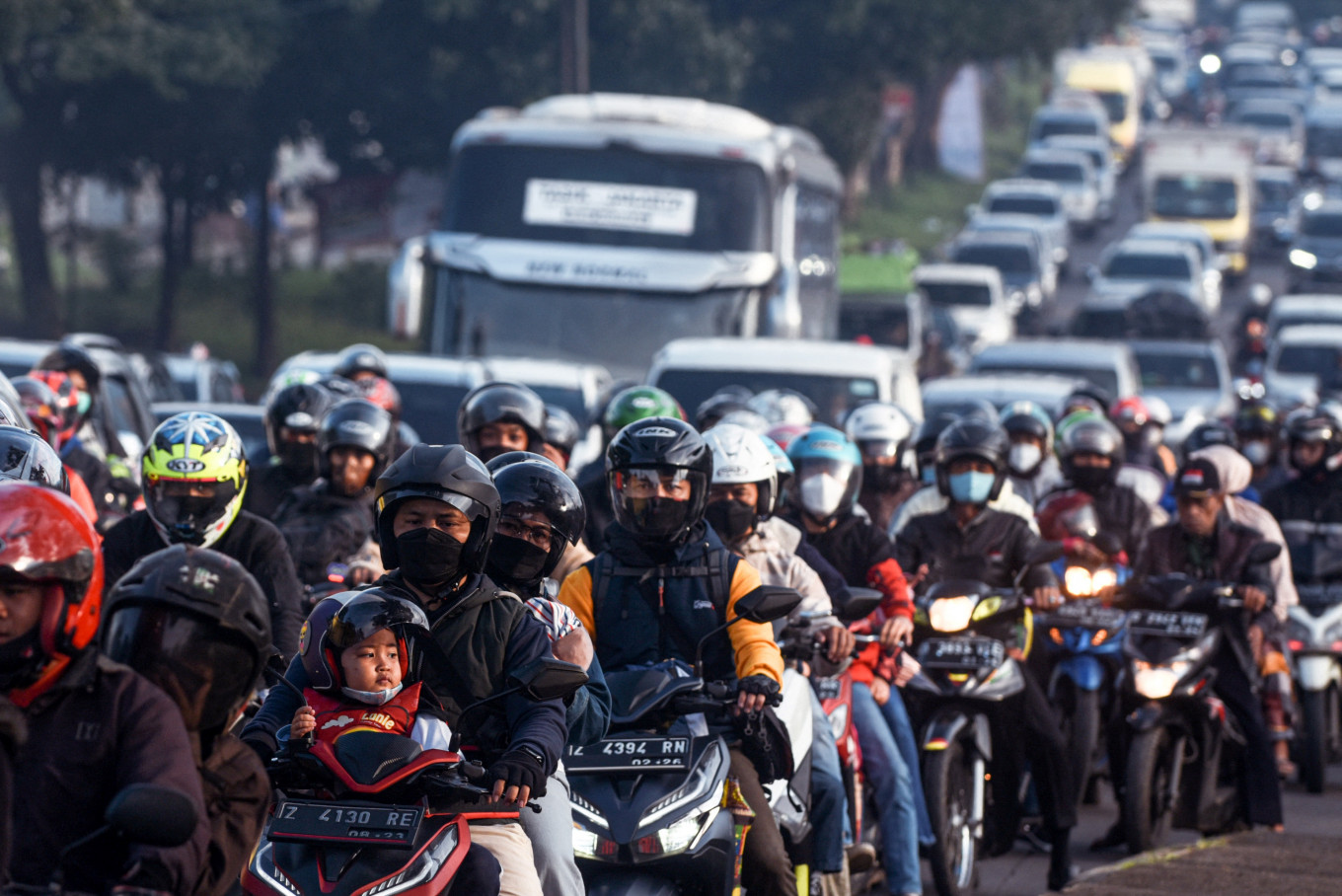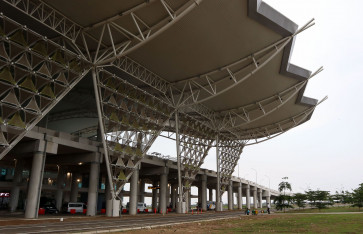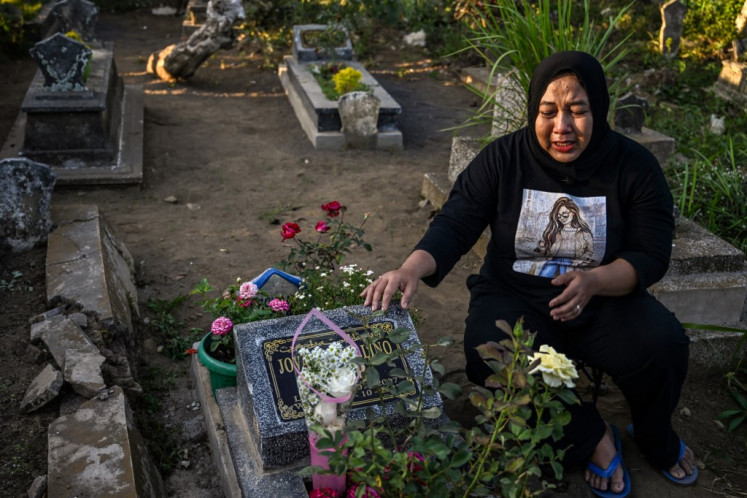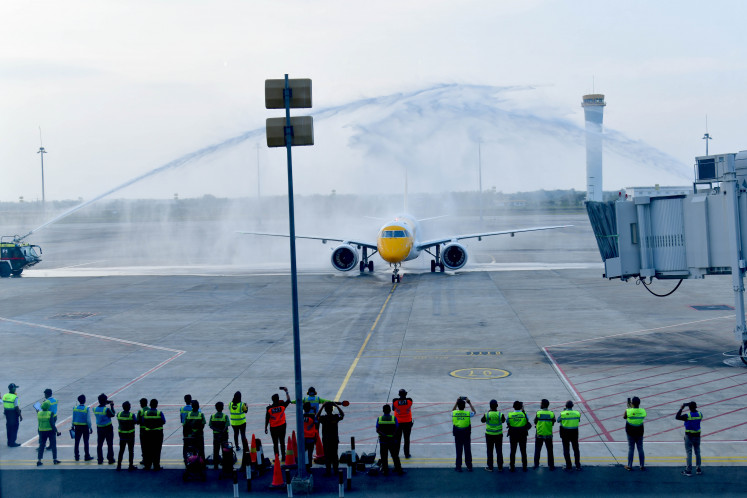Popular Reads
Top Results
Can't find what you're looking for?
View all search resultsPopular Reads
Top Results
Can't find what you're looking for?
View all search resultsGovt adjusts to traffic as holidaymakers return from ‘mudik’
Homebound travelers are now making the return trip as the Idul Fitri holiday season comes to an end.
Change text size
Gift Premium Articles
to Anyone
T
he government is continuing its effort to prevent mudik (exodus) traffic pile-ups by implementing traffic management and administrative arrangements as homebound travelers now make the return trip as the Idul Fitri holiday season comes to an end.
To cushion people against the holiday traffic impact, the Education, Culture, Research and Technology Ministry has also extended the Idul Fitri break for schools in Jakarta, Banten and West Java until May 11.
Students are to return to school on May 12, from the initial date of May 9.
“We have coordinated with the Jakarta, West Java and Banten provincial administrations to extend the school break. The local administrations will communicate this decision accordingly”, said ministry spokesman Anang Ristanto as quoted by Kompas on Thursday.
Ahead of the holiday season, the government had declared mandatory collective leave on April 29 and May 4 to 6 – in addition to the national Idul Fitri holiday of May 2 and 3.
Transportation Minister Budi Karya Sumadi also said on Thursday that some Indonesians had begun returning starting Wednesday, as the ministry’s traffic command center noted an uptick in traffic density from East Java heading west toward Jakarta.
“It is an indication that the public is returning early. This will help in reducing the traffic density during the [mudik] return peak on May 6 to 8”, Budi said in a release.
State-owned toll operator PT Jasa Marga also said that some 195,000 vehicles had reentered Jakarta on Wednesday, with around half of the traffic coming through the trans-Java toll road.
With some Indonesians already on their way back, the ministry said the National Police Traffic Corps had begun applying on Thursday a one-way policy starting from 11 a.m. until midnight.
The one-way arrangement stretched from Kilometer 188 of the Palimanan toll road– just outside of Cirebon city, West Java – to Kilometer 72 of the Cikampek toll road. Authorities have applied a contra-flow policy between kilometer 72 up to 47 of the Cikampek toll road.
The Transportation Ministry said authorities may shorten the time frame of the one-way policy if traffic heading toward Jakarta eased. But should the opposite happen, authorities could also extend the duration and range of the one-way policy from Palimanan all the way to Kilometer 47 of the Cikampek toll road.
The ministry will also divert cargo ships away from the Merak and Bakauheni ports in Banten and Lampung, respectively, so that the two ports can solely cater to people traveling between Java and Sumatra.
Cargo traffic will instead be diverted to the Panjang Port in Lampung and the Ciwandan Port in Banten.
The government predicted that the peak for the return leg of this year’s mudik would fall on Friday, Saturday and Sunday.
On the move
The government had previously estimated that some 85 million people would be going on mudik this year, since it was the first time in two years that Indonesian Muslims were allowed to celebrate the Islamic holy day with relatives at home.
The government also projected that some 23 million cars and 17 million motorcycles would crowd the nation’s highways over the course of the holidays.
According to data compiled by the Transportation Ministry, starting from April 25, just under 64 million people had gone on mudik by land, sea or air transportation, as of Tuesday. The homebound mudik peak fell on Saturday, with 952,210 people traveling.
The most popular mode of public transportation this year was via sea as 1.9 million travelers flocked to seaports throughout the country. Most of the travelers were centered at the Merak and Bakauheni ports, as well as the Ketapang and Gilimanuk ports, which connect East Java and Bali.
The ministry recorded 2.1 million vehicles – not number of passengers – leaving Greater Jakarta during the mudik period.
Although the mudik traffic is likely below government estimates, a number of the country’s arterial roads were still clogged up ahead of Idul Fitri. The Merak Port, for instance, saw a traffic jam that stretched for more than 3 km on Thursday.










